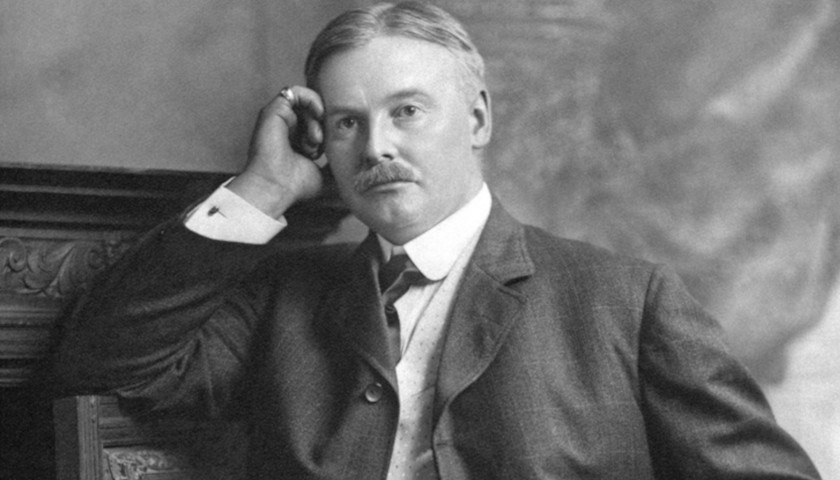William H. Miner was born during the Civil War and died during the Great Depression. He was orphaned at the age of 10 after the death of his father and his only son died a week after birth. He nonetheless exhibited an “unswerving optimism, iron will, dogged determination, meticulous management, and supreme self-confidence,” according to Miner biographer Joseph C. Burke.
Born in Juneau, Wisconsin, in 1862, Miner moved to live with his uncle, John, in Chazy, New York on the family farm, passed down as an inheritance from Miner’s grandfather, Clement. The young Miner studied in a one-room schoolhouse and worked the farm during his free time. Miner said later in his life that the manual labor of the farm “contributed to his sturdy constitution and good health” and instilled in him the “attributes of duty, determination, and diligence.”
It was a letter that Miner received in December, 1880 from his brother-in-law, John Mitchell, that set the course of his life. In fact, Miner scrawled on the upper left-hand corner of the letter: “1880 letter that started me out in the world.”
Mitchell was the superintendent of a Midwest railway company and offered Miner a position in his carpenter shop along with free room-and-board. Miner accepted and started out as a machine shop apprentice for the Walbash Railroad, quickly advancing from draftsman to estimator, to assistant superintendent, and finally to manager for railway companies throughout Minneapolis, Lafayette, and Detroit.
“He learned the railroad business, from the ground up,” Burke writes of Miner’s early career.
While in Detroit, Miner was consulted by officials with the Hutchins Refrigerator Car Company, which was experiencing difficulties caused by failures in its draft-gear system. The company put Miner in charge of car maintenance and operation, and in 1891, at the age of 29, he received his first patent for the invention of a spring draft rigging.
 Burke notes that by 1898, 15,000 cars across 16 railway companies were using the draft gear produced by Miner and his newly-established business, the William H. Miner Company. Miner went on to earn a fortune from his mechanical inventions for railway transportation, including power hand brakes, roller side bearings, safety lock pins, and door fasteners.
Burke notes that by 1898, 15,000 cars across 16 railway companies were using the draft gear produced by Miner and his newly-established business, the William H. Miner Company. Miner went on to earn a fortune from his mechanical inventions for railway transportation, including power hand brakes, roller side bearings, safety lock pins, and door fasteners.
Heart’s Delight
Miner’s fortune allowed him to return to his childhood home and build an agricultural empire. According to Burke’s book-length biography of Miner, he “tried to save the virtues of rural life by bringing the wonders of technology and management to Chazy, Clinton County, and the Champlain Valley, in the northeast corner of New York State, as a model for the country.”
“He followed the course of all great conservatives, conserving what he could by changing what he must. He sought to make rural life both profitable and pleasing to save country values and its youth from the lure of city living,” Burke writes.
Miner, after courting and marrying Alice Trainer, returned to the family farm in Chazy in 1903 after the death of their first and only child. He renamed the farm “Heart’s Delight,” saying in a letter that its new title was an “expression of the great joy reflected to me by the farm and the beautiful country round about.”
“When I named the farm I could not think of anything which would express my feelings towards this particular spot on the earth’s surface more correctly than the phrase ‘Heart’s Delight,’ and it certainly is my heart’s delight every time I am permitted to enjoy the beautiful things which the Creator has showered upon us with such a lavish hand,” Miner said of the farm, according to the Miner Institute.

But Heart’s Delight wasn’t just a place of rest. Within six years, Miner renovated more than 300 buildings, grew the property to 15,000 acres, and employed 800 workers in its prime. Burke writes that Miner took the farm from a “humble homestead” to a “modern magnificent agricultural enterprise, with massive barns and stables, water towers, gristmill, smoke house, steam plant, natatorium, fish hatchery, and houses for farm managers.”
Miner never lost his interest in technology and innovation, either. Burke writes that Miner built a series of dams “on local rivers that supplied hydroelectric power and brought electricity to the farm and the Village of Chazy.” In fact, Heart’s Delight had electric light and indoor plumbing in a dairy barn before the Governor’s Mansion in Albany.
In the latter half of his life, Miner devoted himself to philanthropy, building medical facilities and schools in his community. In one instance, he oversaw the merger of 11 schools in the area in what became the first centralized rural school district in New York State.
“He activity participated in designing the curriculum, which followed the Jeffersonian ideal of theoretical and practical studies, including modern language, history, science, and literature but also agricultural science, animal science and woodworking. He often hired the teachers himself,” Burke writes.
In an ironic twist of fate, Miner died in 1930 in a hospital he built after demanding an operation to remove his tonsils.
– – –
Anthony Gockowski is managing editor of Battleground State News, The Ohio Star, and The Minnesota Sun. Follow Anthony on Twitter. Email tips to [email protected].
Photo “William H. Miner” by Miner Institute.




